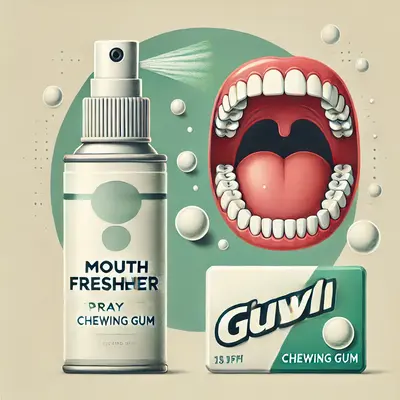Bad breath, or halitosis, is a common problem affecting millions of people worldwide. A significant yet often overlooked cause of bad breath is post nasal drip. Understanding how post nasal drip contributes to bad breath and what can be done to manage it is crucial for maintaining oral hygiene and overall well-being. This article delves into the connection between post nasal drip and bad breath, supported by medical facts, research data, and practical insights.
What Is Post Nasal Drip?
Post nasal drip occurs when excess mucus from the sinuses and nasal passages accumulates and drips down the back of the throat. This can be due to allergies, sinus infections, the common cold, or even environmental irritants. Under normal circumstances, mucus serves an essential role in keeping the nasal passages moist and trapping bacteria and pollutants. However, when mucus production increases or becomes thicker, it can lead to discomfort and a host of other issues, including bad breath.
The Link Between Post Nasal Drip and Bad Breath
The excess mucus produced in post nasal drip can be an ideal breeding ground for bacteria, especially anaerobic bacteria that thrive in environments without oxygen. These bacteria break down proteins present in the mucus, leading to the production of sulfur compounds, which are responsible for the characteristic foul smell. This connection is well-documented in medical literature, with research indicating that post nasal drip is a contributing factor in up to 40% of cases of chronic halitosis.
| Common Causes of Post Nasal Drip | Percentage Contribution to Bad Breath |
|---|---|
| Allergies | 25% |
| Sinusitis | 30% |
| Environmental Factors | 20% |
| Upper Respiratory Infections | 15% |
| Acid Reflux (GERD) | 10% |
Medical Insights and Practical Examples
A 2019 study published in the Journal of Clinical Dentistry found that patients with chronic post nasal drip experienced a marked improvement in their breath quality after addressing underlying sinus issues. One notable case involved a 37-year-old woman who reported persistent bad breath despite maintaining excellent oral hygiene. Upon examination, it was determined that she suffered from chronic sinusitis, leading to continuous post nasal drip. After undergoing treatment for her sinus condition, her halitosis improved significantly, highlighting the importance of targeting the root cause.
Similarly, individuals with seasonal allergies often notice worsening bad breath during allergy seasons. The increased production of mucus combined with a dry mouth (often a side effect of antihistamines) creates an environment that favors bacterial growth. Addressing allergy symptoms through nasal sprays or antihistamines, along with proper hydration, can reduce the impact of post nasal drip on breath quality.
Modern Trends in Diagnosis and Treatment
The management of post nasal drip and its associated bad breath has seen significant advancements in recent years. Over-the-counter (OTC) nasal sprays, such as saline rinses and corticosteroid sprays, remain popular options for managing symptoms. Saline rinses, in particular, help flush out excess mucus, reducing the bacterial load and minimizing the chance of halitosis.
For those seeking a more advanced solution, nasal irrigation devices, such as neti pots or electric nasal irrigators, have gained popularity. These devices are effective in reducing post nasal drip and are available at various price points. Below is a summary of estimated costs for common treatments in the United States:
| Treatment Option | Average Cost (USD) |
|---|---|
| Saline Nasal Spray (OTC) | $5 – $15 |
| Neti Pot | $10 – $30 |
| Electric Nasal Irrigator | $40 – $100 |
| Corticosteroid Nasal Spray | $20 – $50 |
It is essential for patients to select treatments based on the severity of their symptoms and in consultation with a healthcare professional. In severe cases, prescription medications or even surgery may be necessary to address chronic sinus issues.
Preventative Measures and Lifestyle Changes
Preventing post nasal drip and bad breath often involves making small changes in daily habits. Staying hydrated is one of the simplest yet most effective ways to thin mucus and reduce the chances of it causing bad breath. Drinking plenty of water helps keep the mucous membranes moist and discourages bacterial buildup.
Humidifiers can also play a role in preventing mucus from thickening, especially during the winter months when indoor air tends to be dry. Keeping indoor humidity between 30-50% can help minimize symptoms of post nasal drip and subsequent bad breath.
Dietary choices can also impact post nasal drip and breath quality. Spicy foods and dairy products are known to increase mucus production for some individuals, potentially worsening post nasal drip. Reducing the intake of these foods may lead to improvements in both mucus production and breath quality.
Advice from Our Editorial Team
If you are struggling with bad breath and suspect that post nasal drip might be the cause, addressing the underlying triggers is key. Consider consulting with an ENT specialist if you experience persistent symptoms like thick mucus or frequent sinus infections. Simple solutions like nasal rinses, staying hydrated, and avoiding known irritants can often lead to noticeable improvements. Remember, treating bad breath isn’t just about brushing and flossing—it’s about understanding the root cause and managing it effectively.
Bad breath caused by post nasal drip can be both frustrating and embarrassing, but with the right approach, it can be managed effectively. Stay informed, take action early, and maintain open communication with healthcare professionals to ensure the best outcomes.






